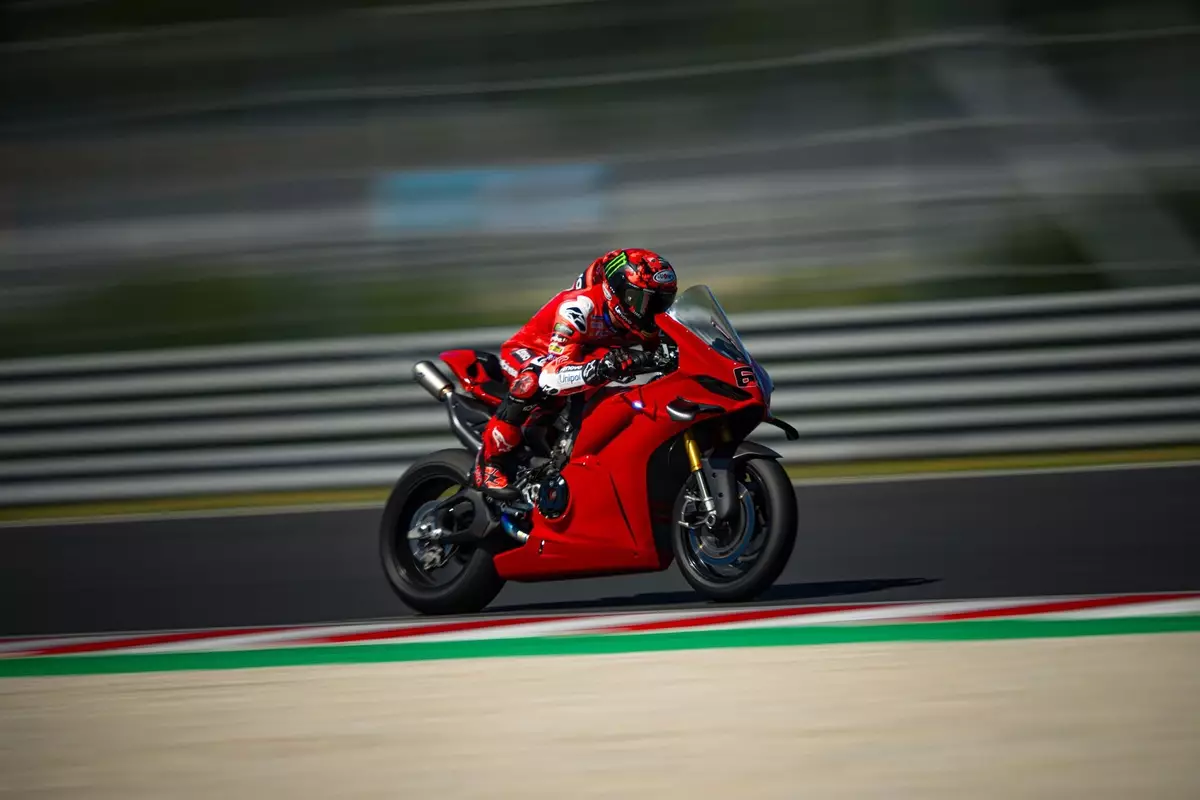In a move that epitomizes meticulous planning and unwavering confidence, Ducati’s recent deployment of seven Panigale V4 S Pro units to Hungary highlights a strategic effort to integrate real-world circuit familiarity into their ongoing championship supremacy. While reigning supreme across riders’, teams’, and constructors’ categories, the Italian powerhouse understands that resting on laurels is a perilous luxury in the relentless realm of motorsport. Their decision to hold private track sessions on Hungarian soil, just weeks before the MotoGP event, underscores a calculated approach focused on maximizing rider adaptation and technical insight.
Ducati’s commitment is not merely about basic track familiarization; it’s a comprehensive technical simulation. By giving their top riders and development experts a chance to explore the new Balaton Park circuit—hosting its inaugural MotoGP round—Ducati proactively closes the knowledge gap before the roar of race engines echo through the Hungarian hills. Such measures, especially given the unusual circumstances of a returning grand prix after a 33-year hiatus, reveal a deep understanding: in MotoGP, preparation equates to power. Ducati’s technical team went a step further by customizing the Panigale V4 S Pro with bespoke modifications—improving braking system responses and suspension adjustments—yet strictly within sanctioned rules to uphold fairness and regulate innovation.
Furthermore, the inclusion of prominent riders such as Pecco Bagnaia and Marc Marquez in these private sessions reflects Ducati’s strategic leverage. Training on a street bike derived from their championship-winning Desmosedici GP provides invaluable synchronization between street and race machinery. These riders, immersed in a near-race environment, are not just acclimating physically—they are fine-tuning their mental approach, mastering the unique characteristics of the new Balaton circuit, which demands a different riding style due to its stop-and-go nature.
Assessing the Impact: The Zest of Preparedness Versus the Unpredictability of Motorsport
What makes Ducati’s approach particularly compelling is their acknowledgment of the circuit’s novelty and the challenges it presents. The Hungarian track is characterized by tight curves, rapid changes in elevation, and a layout that favors both precision and adaptability. By actively testing in advance, Ducati aims to preempt the inherent uncertainties, giving their riders a tangible edge. This foresight could prove decisive, especially considering that the upcoming race marks a unique moment in the calendar—an inaugural appearance after decades of absence.
The riders’ feedback further emphasizes the importance of this preparatory work. Bagnaia’s enthusiastic remarks about the circuit’s small footprint and challenging chicanes reveal an understanding that adaptability will be crucial. Similarly, Marquez’s acknowledgment of the circuit’s “stop-and-go” nature highlights how rider rhythm and mental agility will determine performance. Their positive sentiments are a testament to the effectiveness of the private testing, which bolsters confidence ahead of the race weekend.
However, critics might argue that frontloading track familiarity through private testing could lead to overconfidence or introduce bias. Racing is inherently unpredictable; weather conditions, race-day incidents, and real-time strategic decisions often overshadow pre-race preparations. But Ducati’s strategy serves as insurance—minimizing unknowns and sharpening rider instincts for this specific circuit. Such preparation is especially vital given the historic context of Hungary returning to the MotoGP calendar after a long hiatus, meaning there’s limited historical data for riders to rely upon.
Implications for the Broader Championship Landscape
Ducati’s proactive stance could have wide-ranging implications for the championship narrative. Their meticulous preparation demonstrates that they are not just content with current dominance—they aim to cement it, pushing the boundaries of what is possible through advanced testing and technical refinement. For rival teams, this sends a clear message: Ducati’s relentless pursuit of perfection involves not only pushing the technical envelope but also strategically controlling as many variables as possible.
In terms of rider development, this approach fosters a culture of precision and adaptability. The day’s 70 laps allowed riders like Bagnaia and Marquez to test limits and build mental resilience in a controlled environment. Such experience is invaluable in races where every second counts, and minor differences in circuit knowledge can make a decisive difference. The embrace of this comprehensive prep signals a new paradigm in MotoGP, where private sessions and bespoke testing regimes become the norm rather than the exception.
Ultimately, the return of Hungary’s Grand Prix symbolizes more than just another race—it’s an opportunity for Ducati to showcase their organizational strength and tactical foresight. The newly introduced track demands not only technical skill but smart preparation—qualities that Ducati has demonstrated convincingly. As they gear up for race weekend, it’s clear that their blend of innovation, strategic execution, and rider focus could well set a new standard in MotoGP racing’s future landscape, potentially shifting the balance of power in unpredictable yet exciting ways.


Leave a Reply